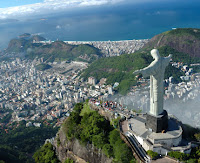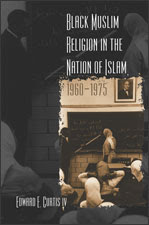As a corollary to Kelly's previous post on Edward Curtis's work on the NOI, in a recent H-AmRel post he announced a new encyclopedia on Muslim-American history.
The post reads:
How have Muslims shaped American religious history and U.S. history
overall? I am looking for writers--professors, graduate students, or
talented undergrads--to contribute my 1000 pp. Encyclopedia of
Muslim-American History, a reference that will show how Muslims have
mattered to American life since the colonial era. I know we are all
pressed for time, but let me appeal to your sense of public outreach.
"Muslim" continues to be read as "foreign" and "unassimilated" not only
in Islamophobic genres (including the recent film "Obsession," 28
million copies of which were distributed for free in swing states [see
further http://www.obsessionwithhate.com/]), but also in mainstream media
outlets. The exotic, overly-religious, first-generation, "fresh off the
boat" Muslim too often stands in for all Muslim Americans in newspapers
such as The New York Times. Such forgetting writes tens of thousands of
Muslims out of the historical record.
We have a chance to correct that by analyzing--not exaggerating--the
presence of Muslims in the Americas. The work will be published by Facts
on File, which has great success marketing their products to high
schools and community libraries. It will have an impact at the
grassroots.
You needn't be an expert to participate in this project. After editing
this project for a year now, I can tell you that there are virtually no
experts on Muslim American history, with the exception of those who are
trained in African American history. Most Islam in America experts are
concerned only with today, or with the history of Muslim America post
1965.
In addition to documenting "religion," this reference will chart Muslim
involvement in U.S. politics, business, music, sports, agriculture, the
military, literature, the visual arts, poetry, social movements, and
more. It will cover the biographies, events, places, themes, and
institutions that have shaped a Muslim-American community diverse by
race, ethnicity, class, and national origin. Five hundred entries will
shed light on everything from Georgia's Sea Island Muslims and the
Muslim sodbusters of the Dakota plain to Ahmet Ertegun's influence on
the music industry and the hundred-year-old legal struggles of Muslims
in U.S. courts.
If you are willing to write even 500 words, that would be a great help.
Please contact me off list, and I will send you the list of entries and
other information. Thanks very much for your consideration.
This will no doubt be an important work, and serve as a great resource for classrooms at all educational levels. I look forward to seeing it in print and using it in the future. As for teaching, readers might also consult Curtis's great article on Islam and the U.S. history survey in the January 2008 issue of the OAH Magazine of History (John Turner posted on this, too).
In other news, Baylor University historian Thomas Kidd's latest work, American Christians and Islam: Evangelical Culture and Muslims from the Colonial Period to the Age of Terrorism, is scheduled for release in November. Here's a brief description:
In the wake of the September 11 terrorist attacks, many of America's Christian evangelicals have denounced Islam as a "demonic" and inherently violent religion, provoking frustration among other Christian conservatives who wish to present a more appealing message to the world's Muslims. Yet as Thomas Kidd reveals in this sobering book, the conflicted views expressed by today's evangelicals have deep roots in American history.
Tracing Islam's role in the popular imagination of American Christians from the colonial period to today, Kidd demonstrates that Protestant evangelicals have viewed Islam as a global threat--while also actively seeking to convert Muslims to the Christian faith--since the nation's founding. He shows how accounts of "Mahometan" despotism and lurid stories of European enslavement by Barbary pirates fueled early evangelicals' fears concerning Islam, and describes the growing conservatism of American missions to Muslim lands up through the post-World War II era. Kidd exposes American Christians' anxieties about an internal Islamic threat from groups like the Nation of Islam in the 1960s and America's immigrant Muslim population today, and he demonstrates why Islam has become central to evangelical "end-times" narratives. Pointing to many evangelicals' unwillingness to acknowledge Islam's theological commonalities with Christianity and their continued portrayal of Islam as an "evil" and false religion, Kidd explains why Christians themselves are ironically to blame for the failure of evangelism in the Muslim world.
A brief portion of Chapter 1 and the Table of Contents are available from Princeton University Press.
Both Curtis and Kidd have added and, it appears, will continue to offer much to the collective understanding of Islam and American religious history.






















